Contents:
- The verbal and quant trackers
- Detailed discussion about the use of Big Book
The Trackers
Below are the trackers that you can use to navigate through the enormous Big Book for your quant and verbal practice:
Detailed discussion about the use of Big Book
About the Big Book
Formally titled GRE – Practicing to Take the General Test: Big Book, this excellent book was published by the ETS in 1995. Though physical copies of the book are rare and expensive, PDFs can be found online. The book offers 27 actual GRE tests administered in the 1990s when the test was paper based.

Though much has changed in the test format since then, much has also remained the same. For the question-types that are still relevant to the modern GRE, Big Book offers a veritable treasure trove of practice questions. Let’s see how many such questions are there.
Big Book for verbal practice
Overall, the Big Book offers 972 verbal practice questions to today’s GRE students (details of the calculation are on Page 3 of the Big Book Verbal Tracker shared above).
In verbal, the:
- sentence completion (SC) questions and
- reading comprehension (RC) questions
in each Big Book verbal section offer great practice for today’s:
- Sentence Equivalence and Text Completion (SE/TC) questions and
- RC questions
respectively.
In fact, some of the present-day official materials have recycled questions and passages from the Big Book.
Two examples where this happened for RC passages:
- The Pessen passage in OG Chapter 4 Set 4 is taken from the Big Book Test 18 Section 1.
- The Mammalian Intelligence passage in OG Chapter 4 Set 4 is also taken from the Big Book Test 18 Section 1 (this passage has only 4 questions associated with it in the OG but has 8 questions in Big Book).
Two examples of modern-day SE/TC questions that have been adapted from Big Book sentence completions are:
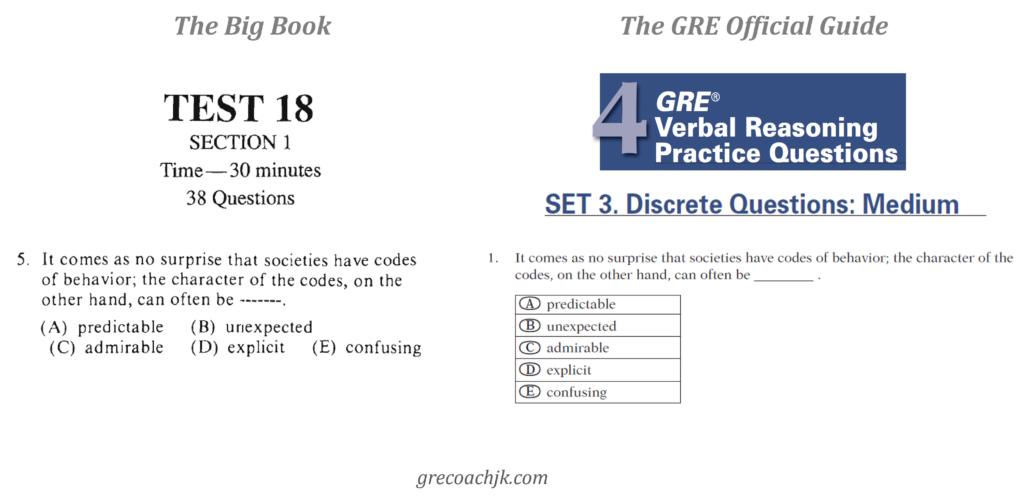
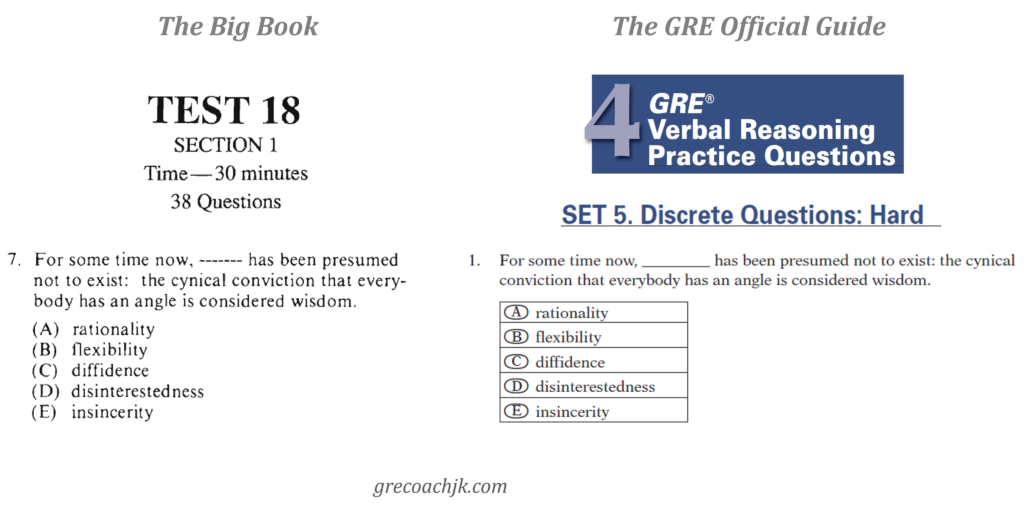
I do think that the 2-blank SC questions have a friendlier answer-choice format as compared to today’s 2-blank TC questions. For example, consider this question:

As per the Big Book, the P+ (percentage of test takers who answered this question correctly) is 39. I present this same question to my students after adapting it to the modern-day 2-blank TC format as follows:
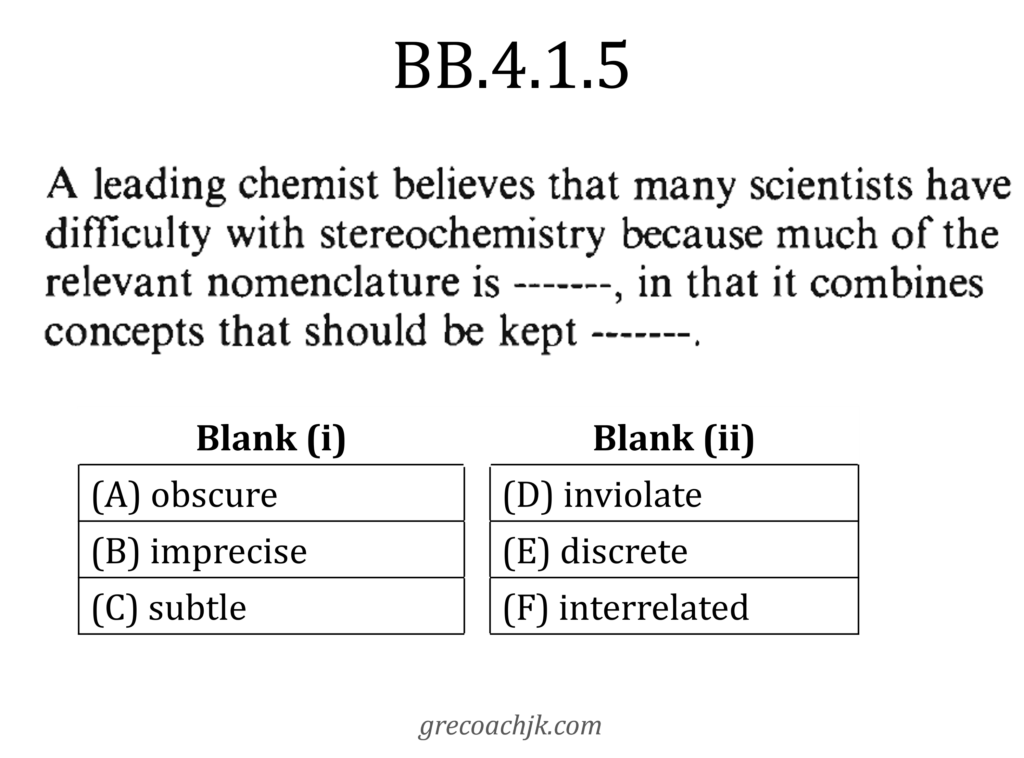
In my experience, the 2-blank TC format makes the question even harder, because now, you must evaluate each answer choice for blank (i) and for blank (ii) separately. Not knowing a word – say ‘obscure’ – is a bigger issue in the modern format than in the SC format of BB; in the SC format, you could have still confidently rejected option A because you were sure that the second word could not be ‘interrelated.’ (If you are curious, the correct answer is (B) imprecise – (E) discrete.)
Another thing you should know about practicing for SE/TC questions through the Big Book: there are no 3-blank TCs in it.
However, on the plus side, the single-blank SC questions are indistinguishable from today’s 1-blank TCs. And the 2-blank SCs still offer great practice for pre-thinking the blank words based on context clues.
Big Book for quant practice
You can use all the quant questions in the Big Book for practice. The Big Book has 27 tests; each test has 2 quant sections; each quant section has 30 questions. Therefore, in total, the Big Book offers 27*2*30= 1,620 quant practice questions.
Admittedly, even the hardest quant section in the Big Book is no harder than a modern-day medium difficulty quant section: the average difficulty level of a modern-day medium quant section is 3, while that of a Big Book quant section is, as per my analysis, 2.7, with the range being 2.3 to 3.1. But I believe that the relative easiness of the Big Book quant sections is offset by a lower time-limit – the 30 questions need to be done in only 30 minutes. If today’s GRE test contains more hard questions, then it also provides more time per question (you get 35 minutes for only 20 questions). I find the Big Book quant sections to be great sources for timed practice, particularly to cultivate the discipline of not spending too much time on any one question.
A Big Book quant section of 30 questions has, on an average, the following composition, difficulty-wise:
- 10 questions of difficulty level 4 or 5 (the maximum difficulty level),
- 12 questions of difficulty level 3 (medium) or 2,
- 6 questions of difficulty level 1 (the least difficulty level in today’s GRE), and
- 2 questions of difficulty level 0.5 (easier than even the easiest questions on modern-GRE).
Many questions in present-day official material echo Big Book questions. Here are two such examples:
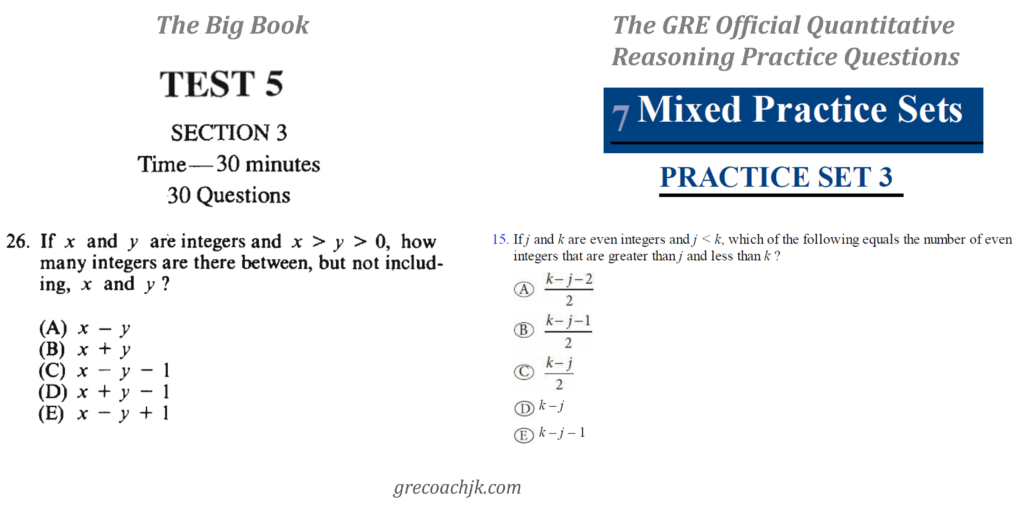
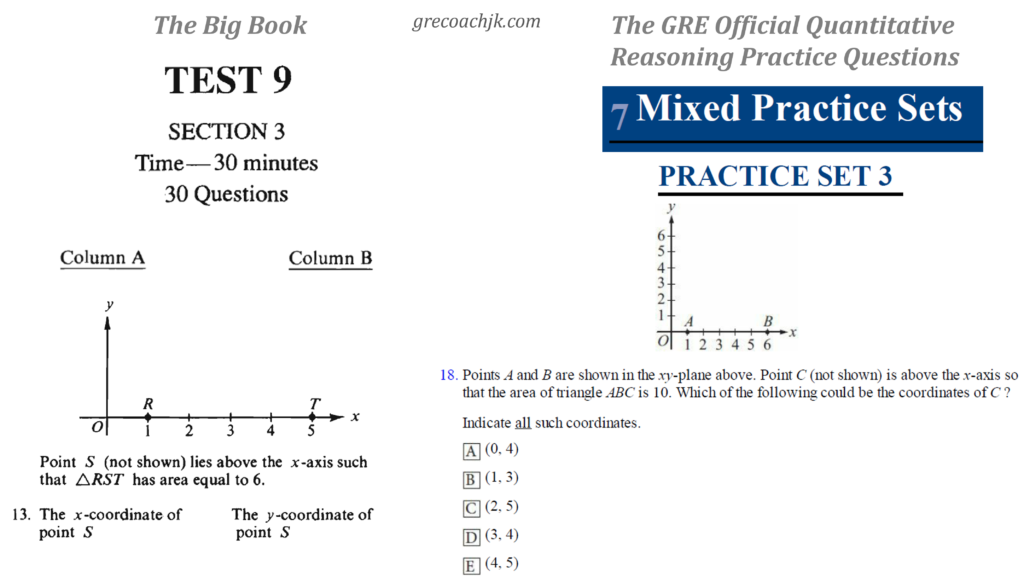
For students who struggle with data-interpretation sets, in particular, Big Book is a great practice resource. In each quant section of the book, questions numbered 21 to 25 are based on a graph-set. For many of my students, I have recommended a daily routine of doing one graph set from the Big Book daily. By the time my students reach the last quant section of the last test, their graph-related problems have usually disappeared.
Note: Big Book provides an Answer Key but not answer explanations. So, if you can’t figure out the solution to a question on your own, you may have to do an internet search for it or take the help of a tutor or a friend.